As someone who’s mostly playing strategy games and RPGs, fighting games might as well be on the opposite side of the aisle. I just haven’t been hooked by them since 90s arcades were popular. Still, I’d like to keep an open mind when giving these battlers a try every now and then. Enter Dead or Alive 6, the latest from Koei Tecmo’s fighting game franchise. It’s time to enter the DOA Tournament!
The Story So Far
Well, I thought it was already time to enter the tournament. Turns out there’s a lot of exposition and catching up to do. Dead or Alive 6’s story mode starts out innocently enough with Helena asking Marie Rose to go on a mission. A short cutscene suddenly leads to a catfight which actually startled me since Helena’s last words were, “I don’t know if you’re ready.”
From there, the rest of Dead or Alive 6’s narrative opens up, and boy, it’s a doozy. If you’ve gotten used to the story modes in fighting games, you’re probably familiar with “arcade-type” runs that lead to, oftentimes, non-canonical endings. It’s either that, or you’re following a linear journey that can also be cohesive. Dead or Alive 6 eschews conventional wisdom and instead plops down multiple branches for almost every character.
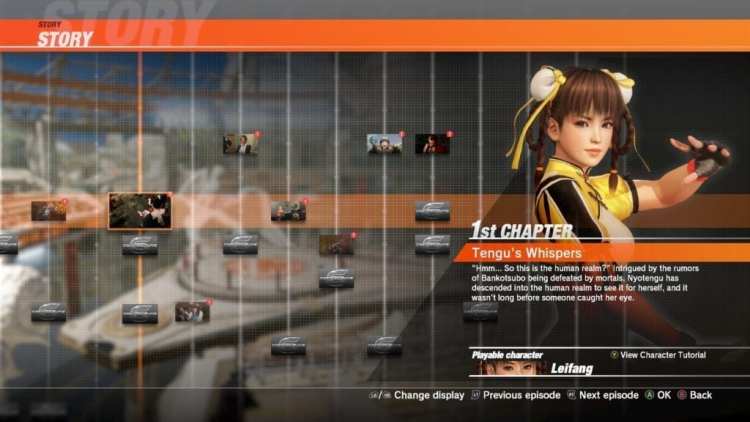
The storyline’s branches — which are probably as convoluted as following “the old Reddit switcheroo.”
As long as you commit to one branch at a time, the story shouldn’t be too hard to follow. What is more glaring, however, is the presentation. Hilarity ensues in some cutscenes, but hilarity exists in general since the tale is too whimsical and hokey to even take seriously. Does it have to be serious? Probably not. Then again, last I heard the series wanted to be more mature. Even more perplexing is that certain scenes last longer than the single-round matches themselves.
The story mode feels like an accessory — tacked on and almost unnecessary given the dubious quality. You’re also better off selecting Japanese voice acting. If you choose English, then prepare for moments when the cartoonishly lackluster English VA doesn’t mesh well with character lip movement.
I take it that the story isn’t a fighting game’s strongest suit, but it’s 2019. Surely if a game like Mortal Kombat can turn ungodly amounts of gore into something worth knowing more about, then perhaps Koei Tecmo could also learn a lesson.
The Quest Is Just A Guest
Speaking of tacked on, we’ve got “DOA Quest” which is entirely separate from the story. Quest mode, funnily enough, doesn’t give you quests so much as simple checklists. Well, if you’re playing MMORPGs with rudimentary steps, then we can consider these as quests.
I digress. Point is that “DOA Quest” simply pits a specific fighter against another, and you’d need to complete the requirements. Sometimes you’re asked to do a ground attack, sometimes it’s a specific attack. For other matches, your task could be as simple as doing enough damage with a single combo. That’s basically it.
Your reward would be some extra gold used to buy costumes or wardrobe accessories (more on these later). Oh, and you also get extra points to unlock some wardrobe. Oddly enough, Dead or Alive 6 doesn’t actually tell you whose costumes you’d be unlocking!
The same can be said for the regular arcade mode where you just face off against one opponent after another. You can select from various AI difficulties and earn rewards, and yet you won’t know who they’re for. You could play as Leifang only to end up with a new costume for Hitomi. Huh?
Fan Service
As for costumes, well, yes, you can still play dress-up with your male and female characters. Dead or Alive’s trademark fan service is still there. It’s not as egregious as, say, Dead or Alive 5 Last Round’s boob-covering floral garlands. But it’s also not so lacking in overly sexualized characters as game director Yohei Shimbori once touted.
The default costumes for your female characters in Dead or Alive 6 have most of them covered up. Once you head over to the wardrobe section, you’ll find that skimpier attires do exist for the ladies.
Does it bother me at all? Well, to be honest, not really. I could barely be bothered to even care about jiggle physics. It’s there if it’s there, and you can turn it off if it’s distracting or offensive. Is this feature something that the franchise is known for? Yes. Is it something that a certain subset of fans might also be looking forward to? Looks like the answer is “yes” as well if we’re going by a Steam topic that talks about nipples.
Apart from sexy pixels and digital abs seen in certain costumes, you can also change your character’s hairstyle or headgear, along with any sunglasses that they wear. You can also add some random nicknames to be displayed when you’re online, depending on the customization slot for each character.
Go Fight!
I’ve been talking about Dead or Alive 6’s other features but the meat of the game will always be its fighting system. With the triangle system and trademark mechanics, you’ll see strikes and throws turn into punishing counters. Fast and fluid animations punctuate an exhilarating and almost tactical experience. Do you wait for your opponent to make one false move? Or do you aggressively go for bread-and-butter combinations?
Enriching the experience are the different fighting styles that each character has. Father and daughter duo Bass and Tina are both pro wrestlers and it shows with their moveset. That’s quite different from Mila’s MMA background (complete with armbars and triangle chokes). Jann Lee channels his inner Bruce Lee with his Jeet Kune Do background, while newcomer NiCo, a scientist from Finland, apparently uses Pencak Silat, an Indonesian martial art (you know, from Iko Uwais and The Raid).
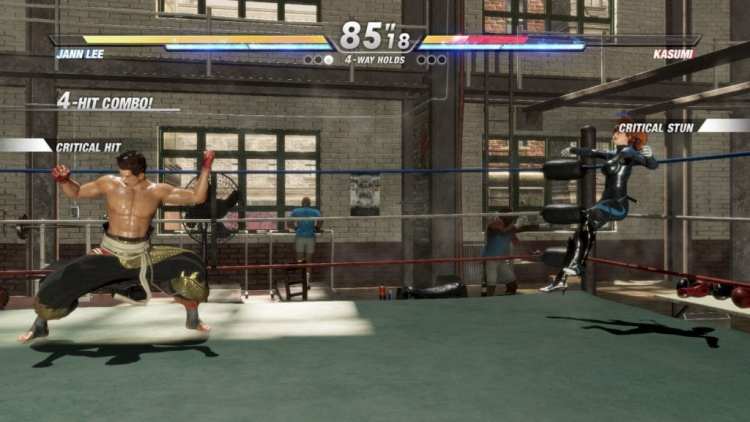
Nothing’s more satisfying than sending an opponent to the other end of the arena coupled with that Bruce Lee yell.
Blazing, split-second reversals can be eye-popping, accompanied by equally jaw-dropping visuals. While there’s something off with Dead or Alive 6’s story mode cutscenes (they’re somewhat bland), the game’s actual arenas feel more alive than ever.
The knockout/ring-out system has stages that lead to lots of explosions, or onlookers throwing you back into the middle of the fight area dazed and confused. Some stages go way over-the-top, such as a Kraken’s tentacle grabbing a fighter, or a pterodactyl swooping in. It’s zany to the point that you could almost forgive all the other issues… almost.
Break Time
Perhaps the most intriguing new addition in Dead or Alive 6 is the break system. Fighters have a gauge that fills up when taking or dealing damage. You could do a break blow or break hold to turn the tide of battle, or you could activate a Fatal Rush. This one leads to successive hits, culminating in a “finisher” or “X-ray-style” attack that takes your opponent down.
It’s a system that’s perfect for newcomers to the series, or fighting games in general even, as well as veterans. One button can get you out of a bind, but that same one-button command can also be your undoing at the hands of a more experienced player. I can only imagine how many strategies will come into play when using the break system.
Another decent inclusion is the visible damage to your characters’ bodies and clothing. Getting punched or kicked in the face isn’t a good idea since bruises and even some blood can be seen on your character’s facial features. How about taking a body blow? Well, your torso armor is ripped apart when that happens. The slow-mo cuts when these bone-crushing hits happen are a joy to watch.
Still Breathing
Dead or Alive 6’s new mechanics such as background/knockout stages, slow-mo attacks, and player damage are refreshing for the franchise. Sadly, these mechanics are old news when it comes to fighting games as a whole. Mortal Kombat already showed how you can add a strong narrative element to a fighting game, and X-ray attacks were commonplace happenings eliciting “oohs” and “ahs.” Soulcalibur 6, despite sticking to tradition, had custom player-made characters to keep you entertained. Street Fighter? Tekken? The list goes on. Super/counter/break gauges have been around since time immemorial.
A very barebones DOA Quest mode and seemingly random costume rewards would also make you wonder if Koei Tecmo even tried. And I haven’t even mentioned the surprising 100 percent CPU usage that happens when you’re running the game. Yes, that’s correct — Dead or Alive 6 shows full CPU usage for all cores and threads, even though your machine isn’t overheating (yet) and you’re not taking performance hits (a stable 60 FPS). That’s just mind-boggling software design.
I wasn’t able to find a single online match while reviewing the game. There’d likely be more people once it’s released. Dead or Alive 6 does have local co-op, and you’re more likely to play it using a controller (I mean, it’s a 3D fighting game).
So what does Dead or Alive 6 have going for it? You’ve got fluid animations, smooth movement, the ease of picking up and playing, along with the necessary depth to attain mastery as you hit counter after counter. Combat never feels stiff nor clunky, and, outside of exaggerated physics and teleporting ninjas, it’s as realistic a take as you can find in a 3D battler. But can it stand out? Well, it’d probably need the exaggerated physics and teleporting ninjas in the first place.

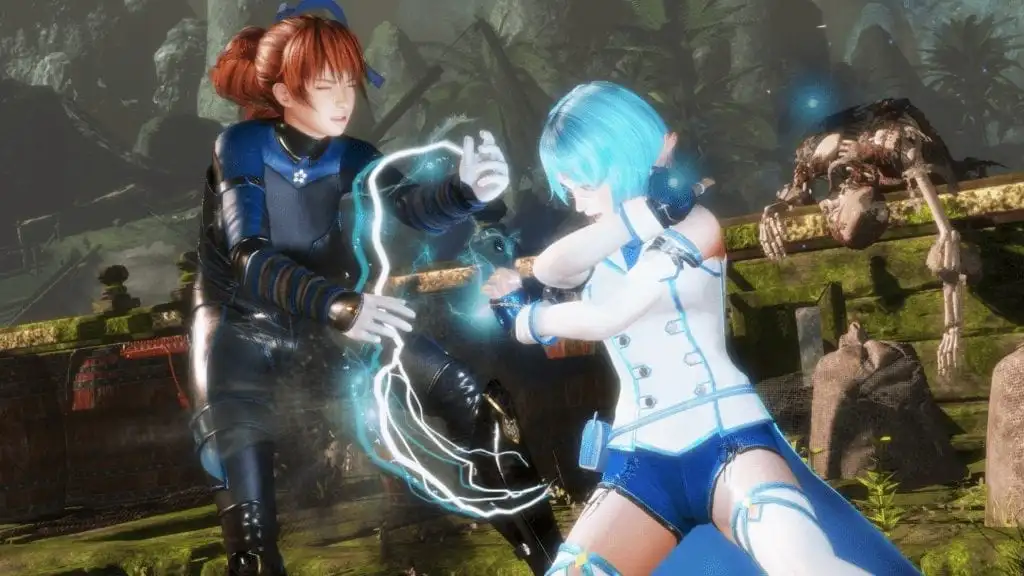
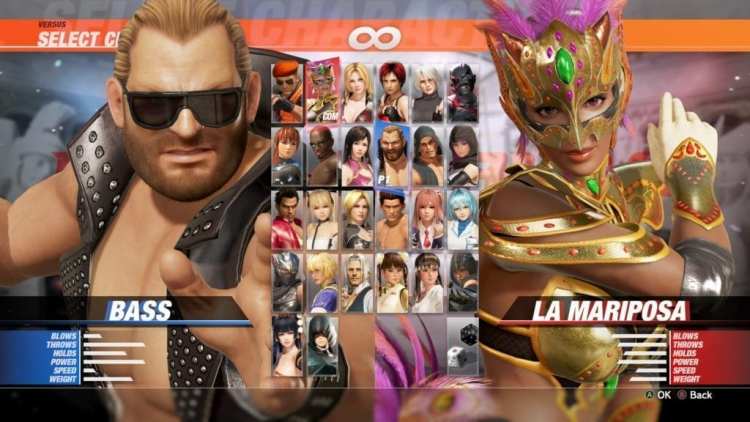
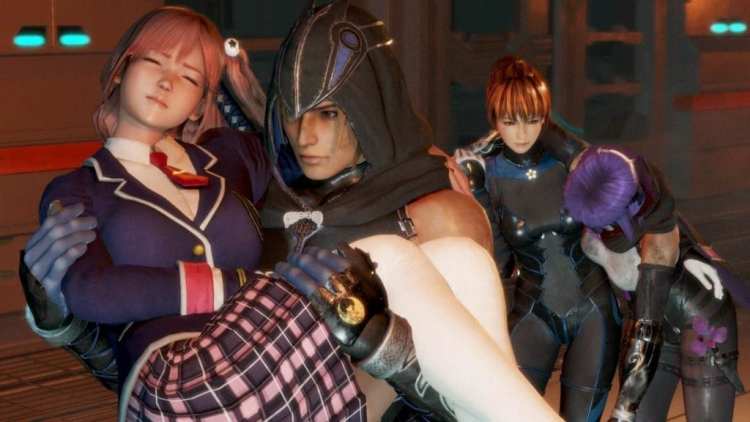
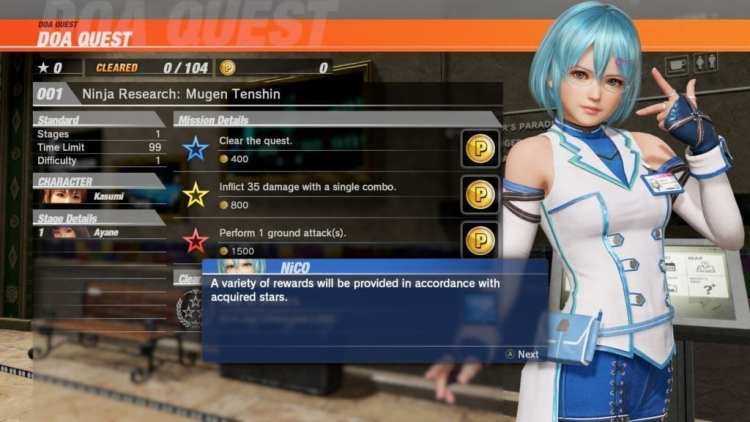
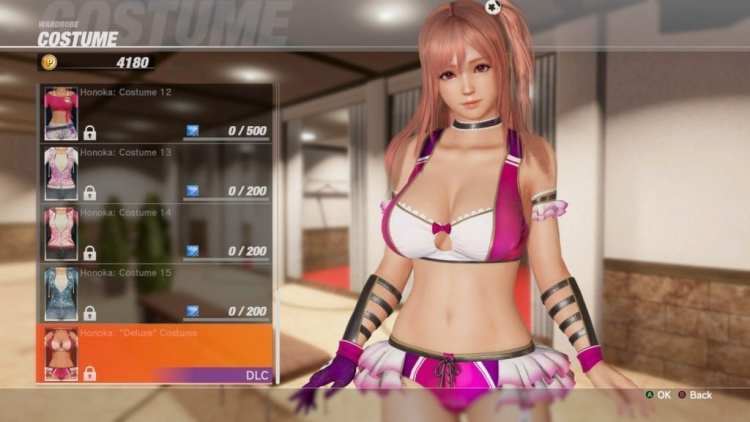
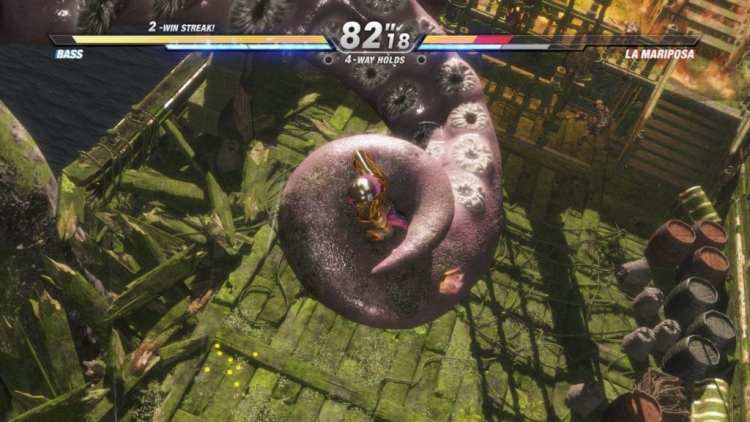
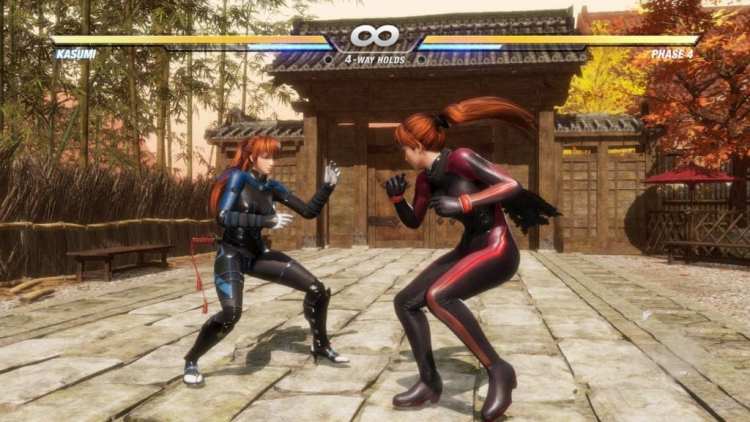
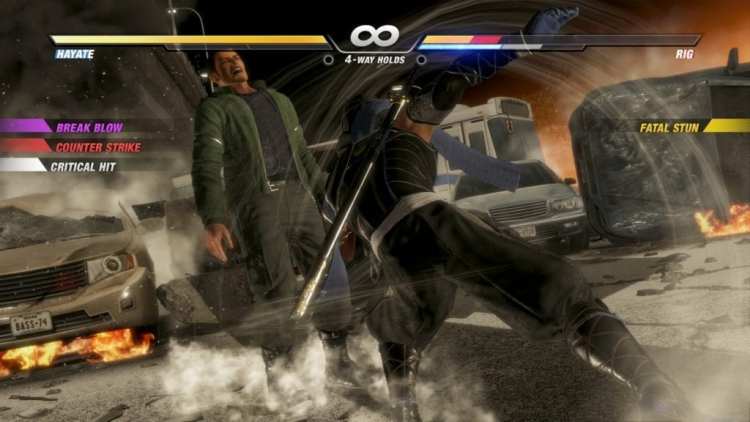
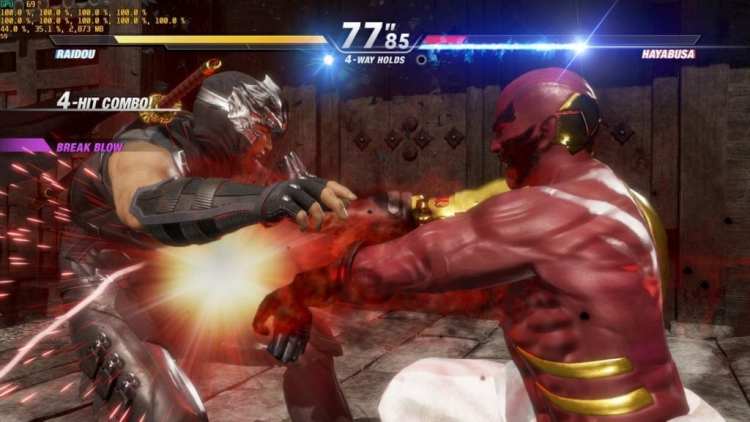





Published: Mar 1, 2019 04:00 am